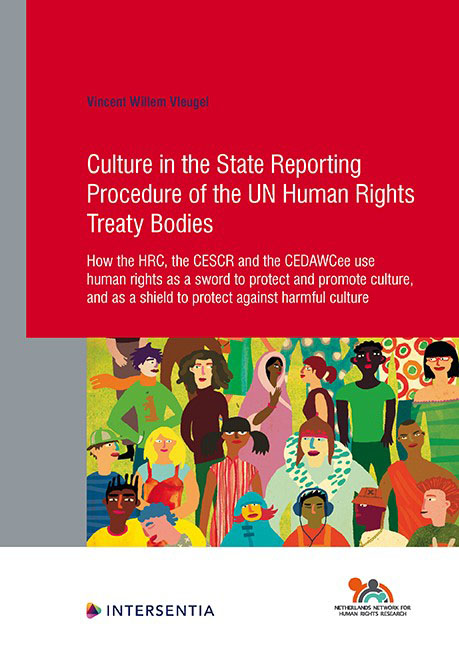 Culture in the State Reporting Procedure of the UN Human Rights Treaty Bodies
Culture in the State Reporting Procedure of the UN Human Rights Treaty Bodies Published online by Cambridge University Press: 11 November 2021
INTRODUCTION
The overarching research objective of this study was to map and analyse the ways in which culture features in the UN treaty bodies’ State reporting procedure.
This research has taken place in a time of increasing challenges to the universality of human rights. According to the Special Rapporteur in the field of cultural rights at the time of writing, Karima Bennoune:
(…) universality is currently under sustained attack from many directions, including from some Governments, from some on the political right and left, from some non-State actors, including extremists, fundamentalists and populists around the world, and even from some quarters in academia, including those who misuse culture and cultural rights justifications.
This indicates a revival of the universalism versus cultural relativism debate, which has been ongoing ever since the adoption of the Universal Declaration of Human Rights in 1948. In general, however, the conclusion can be drawn that, nowadays, this debate has given way to theories which try to reconcile universal human rights and cultural diversity. As chapter 2 has shown, broad consensus exists on that respect for cultural diversity can very well be consistent with the notion of the universality of human rights. In fact, cultural diversity and universal respect for human rights complement and reinforce each other: respect for cultural diversity is ‘an ethical imperative, inseparable from respect for human dignity’. There are positive and negative aspects to culture and cultural diversity in relation to human rights. Culture can be positive, strengthening a community's identity and cohesion; it can also be negative, leading to stigmatisation, marginalisation and harm.
In existing research, scholars have suggested two possible avenues for reconciling universality and cultural diversity, and thereby enhancing the universal legitimacy of human rights: (1) Flexibility in interpretation and implementation of rights, ie, cultural differences can legitimately be taken into account by States when fulfilling their obligations under international human rights law; (2) the process of genuine internal discourse and cross-cultural dialogue about the meaning and implications of basic human values and norms.
When it comes to the universal rights embodied in the UN human rights treaties, the treaty monitoring bodies have an important role in ensuring that a proper balance is struck between safeguarding the universality of these rights with profound cultural diversity.
To save this book to your Kindle, first ensure [email protected] is added to your Approved Personal Document E-mail List under your Personal Document Settings on the Manage Your Content and Devices page of your Amazon account. Then enter the ‘name’ part of your Kindle email address below. Find out more about saving to your Kindle.
Note you can select to save to either the @free.kindle.com or @kindle.com variations. ‘@free.kindle.com’ emails are free but can only be saved to your device when it is connected to wi-fi. ‘@kindle.com’ emails can be delivered even when you are not connected to wi-fi, but note that service fees apply.
Find out more about the Kindle Personal Document Service.
To save content items to your account, please confirm that you agree to abide by our usage policies. If this is the first time you use this feature, you will be asked to authorise Cambridge Core to connect with your account. Find out more about saving content to Dropbox.
To save content items to your account, please confirm that you agree to abide by our usage policies. If this is the first time you use this feature, you will be asked to authorise Cambridge Core to connect with your account. Find out more about saving content to Google Drive.